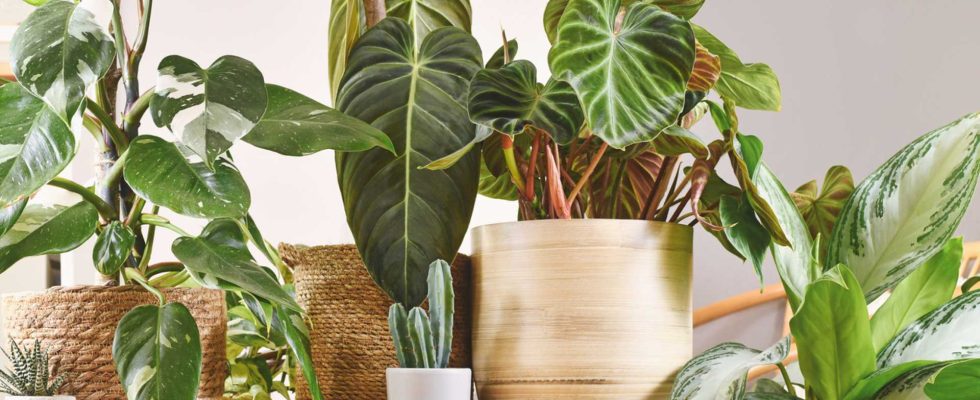Preparing chilly houseplants to come indoors
If you have an outdoor space, perhaps you have taken advantage of the sunny days to install your indoor plants outside? If so, now is the time to start gradually re-acclimatize them indoors. To do this, start by bringing them inside first at night. By doing this, you will prevent them from undergoing too sudden a change.
Then, as soon as the temperatures drop, leave them inside day and night. Be careful with carefully control each plant so as not to run the risk of bringing insects or other undesirables into your interior.
Little cleaning
You can take advantage of this time of year to carry out cleaning your cups or saucers, but also your pots and your plants. This means removing any dead leaves and wilted stems and dusting the foliage. Yes, the health of your plants requires very clean foliage. We must not forget that this allows it to absorb maximum light, which is synonymous with better photosynthesis.
To do this, you can wipe a damp cloth over each sheet, front and back. For cacti and succulents, you can use a paintbrush.
Prune if necessary
If your plant has weaker branches or in poor condition, Fall is the best time to prune them. Your plant will thus devote all its resources to the parts that are healthy. Depending on the species, pruning allows you to benefit from a more robust plant to face winter.
Repot

Plants that need to be repotted can be repotted in the fall, but also in the spring. This repotting is necessary if you have the impression that your plant is cramped in its pot.
A good way to make this impression a certainty is to check whether the roots are coming out of the pot through the water drainage hole or not. If this is indeed the case, it is much better to proceed with repotting. During this operation, instead of reusing the initial substrate, offer new soil to your plant. This will allow it to benefit from a greater supply of nutrients which are necessary for its proper development.
Monitor pests
In autumn, do not relax your vigilance regarding the possible presence of pests on your plants. In fact, mealybugs, red spiders and whiteflies do not rest.
Change your watering habits
If in summer it is necessary to increase watering to help your plant tolerate the heat and develop well, in autumn and as soon as the temperatures drop you can start to space out watering. Remember that a plant at rest logically has significantly lower water needs. But the amount of water it needs depends a lot on where your plant is located:
- If your plant is installed in a cold greenhouse or a cool room, it will go into winter rest and you will only need to water it from time to time.
- On the other hand, if your plant is installed in a heated room or near a radiator, you will then need to remain vigilant about its condition and the state of the substrate to water it sufficiently.
Do not neglect the question of brightness
With the days getting shorter, the sun shining less, the sky being obscured by clouds, etc., the brightness in your interior is not the same in summer and autumn. It is therefore important to take this parameter into account to ensure that the needs of your plant are met.
As the hours of sunshine decrease and the sun becomes less scorching, it may be wise toinstall your plants near a window. This will allow them to benefit from maximum light. However, if you put them near a door or window, be careful of drafts which can be fatal to them. Also think about turn the pot regularly to ensure that your plant does not grow irregularly and therefore unsightly.

